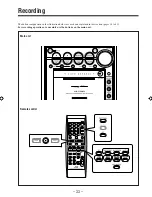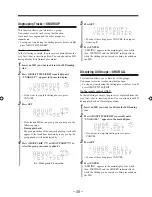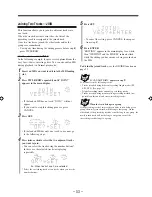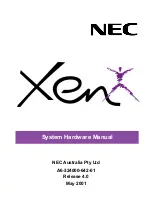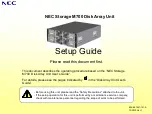
– 38 –
Before You Start Recording on a Tape
•
It may be unlawful to record or play back copyrighted material without the consent of the copyright
owner.
• The recording level is automatically set correctly, so it is not affected by the volume level. Thus, during recording you
can adjust the sound you are actually listening to without affecting the recording level.
• While recording, you can hear sound mode effect and/or the AHB PRO (Active Hyper Bass PRO) effect through the
speakers or headphones. However, the sound is recorded without these effects (see pages 14).
• If recordings you have made have excessive noise or static, the unit may be too close to a TV. Place the unit away
from the TV.
• You can use only type I tapes for recording.
To protect your recordings
Cassettes have two small taps on the back to protect
unexpected erasure or recording.
To protect your recording, remove these tabs.
To re-record on a protected tape, cover the holes with
adhesive tape.
Do not use type II and type IV tapes since the unit
is not compatible with such tapes.
The use of the C-120 or thinner tape is not
recommended, since characteristic deterioration
may occur and this tape easily jams in the pinch
rollers and the capstans.
To keep the best recording and playback sound
quality
If the heads, capstans, and pinch rollers of the cassette
deck become dirty, the following will occur:
• Loss of sound quality
• Discontinuous sound
• Fading
• Incomplete erasure
• Difficulty in recording
To clean the heads, capstans, and pinch rollers
Use a cotton swab moistened with alcohol.
Capstans
Erase head
Record/play head
Pinch roller
To demagnetize the head
Turn off the unit, and use a head demagnetizer
(available at electronics and audio shops).
At the start and end of cassette tapes
There is leader tape which cannot be recorded onto. Thus,
when recording discs, MDs, or radio broadcasts, wind the
leader tape first to ensure that the recording will be made
without any music part lost.
Adhesive tape
EN33-40UX-Z7MD[A]f
02.7.31, 21:26
38










